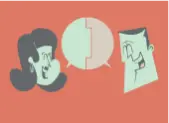- sales
- Blog post
Want training to stick? Train salespeople like first responders
Imagine you’ve trained salespeople on a tough sales skill — say, how to engage a prospect in the first 20 seconds of a cold call. Everyone has rehearsed the new technique and can’t wait to hit the phones (okay, I said it was imaginary). You listen in on some calls and everything’s going great. People are applying the skill and getting results.
When you check in six months later, however, most salespeople have slid back into old habits. And, you notice, they’re least likely to remember the new approach when the stakes are highest — for example, when they’re calling on Fortune 500 prospects.
What you’re seeing is the difference between learning a new skill and mastering it.
When salespeople fail to master their craft, the consequences can be severe, both for the individual and the organization. But when, say, firefighters or ER doctors choke at the moment of truth, lives can be lost. So it pays to take a closer look at how their trainers tackle the problem of backsliding.
It’s a brain thing, yo
It will not surprise regular readers of this blog to learn that the problem lies in how the brain processes information, especially under stress. Stress causes the brain to bypass the rational/thinking part of the brain — which is accurate but slow — and fall back on the part that governs automatic responses — which acts quickly, but can sometimes go wrong.
Specifically, in a crisis, the brain goes to what scientists call the “dominant response” — basically, a habit of thinking. Providing more information doesn’t really change the dominant response, because information is processed through the thinking part of the brain, not the automatic part.
So how do you change the dominant response? The same way you get to Carnegie Hall: practice, practice, practice.
Those who train first responders, emergency personnel and soldiers use a technique called “overtraining.” They train well past the point where someone has “learned” what to do, to where the desired action becomes the automatic — that is, dominant — response.
Not just any training fits the bill. Overlearning requires lots of drills, under conditions that are as close to real-world as possible. That’s the idea behind simulations, complete with actors, fake blood and — if you’re in boot camp or Navy SEAL training — real bullets.
The problem, of course, is that it’s hard to create enough live drills to change the dominant response. Even more so for you, the sales trainer. You can’t be running cold-calling drills every week.
Fortunately, you do have an advantage. If a salesperson flubs a call, nobody dies. So you can substitute actual experience in place of drills. What that means, however, is that you can’t just turn reps loose and let them do whatever. You have to treat the live calls as if they’re drills, with all the oversight, coaching and debriefing that you’d do after a practice session. And you have to do so consistently, over time, until you can see that you’ve locked in the right response.
How much overlearning is required? In one experiment involving surgical students, it required about twice as much training as usual. That’s a lot of work. But the benefits are huge. Consider what it would mean to have salespeople truly become masters at their craft.
Source
Marcucci, V., et al. (2015). Overlearning enhances skill retention in a simulated model of laparoscopic cholecystectomy. Journal of the American College of Surgeons, 221(4), e74.

Get a demo of all our training features
Connect with an expert for a one-on-one demonstration of how Rapid Learning can help develop your team.


